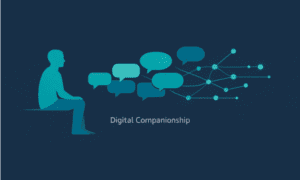In the ever-evolving world of research, efficiency and cost-effectiveness are becoming just as important as accuracy and rigor. One powerful method that fulfills all these criteria is secondary data analysis—the process of analyzing existing data collected by others. Whether for academic, business, or policy research, secondary data offers a time-saving and budget-friendly alternative to primary data collection. With the support of expert data analysis services, researchers can extract valuable insights from pre-existing datasets and make informed decisions without the high costs associated with fieldwork or surveys.
Professional data analysis service providers are increasingly helping clients unlock the full potential of secondary data sources through advanced statistical tools, structured methodologies, and clear interpretation.
What is Secondary Data Analysis?
Secondary data analysis involves examining and interpreting data that has already been collected for other purposes. This data can come from a variety of sources, including:
- Government databases (e.g., census, labor statistics)
- Academic archives
- Healthcare records
- Market research reports
- Surveys and studies by NGOs or think tanks
- Internal company data such as CRM, sales, or HR records
By using professional data analysis services, researchers can repurpose these datasets to address new research questions, test hypotheses, or support policy recommendations—all without incurring the expense and time burden of original data collection.
Benefits of Secondary Data Analysis
1. Cost-Effectiveness
One of the most significant advantages of secondary data analysis is its affordability. Collecting new data can involve survey design, participant recruitment, data entry, and field operations. By contrast, using existing data dramatically reduces costs while still providing rich insights.
2. Time-Saving
In fast-paced environments such as business decision-making or academic deadlines, time is of the essence. Secondary data can be accessed and analyzed relatively quickly, making it ideal for time-sensitive research projects.
3. Large and Diverse Datasets
Many secondary data sources are collected on a national or even international scale, offering researchers access to larger and more diverse samples than they could gather independently. This can improve the generalizability and depth of research findings.
4. Historical Data Access
Secondary data often spans multiple years, allowing for longitudinal or trend analysis. With the help of a reliable data analysis service, researchers can study patterns over time without the need for extended observation periods.
Applications Across Sectors
Secondary data analysis is widely used across industries and disciplines:
- Academia: Graduate students and researchers use public datasets for theses, dissertations, and publications.
- Business: Market trends, competitor analysis, and customer behavior can be studied using third-party reports and industry data.
- Healthcare: Epidemiologists and public health experts analyze patient records and health surveys to monitor disease trends or evaluate interventions.
- Public Policy: Policymakers use data from national statistics agencies to assess social programs or draft legislation.
Regardless of the field, expert data analysis services ensure that the data is interpreted accurately and meaningfully.
Common Techniques in Secondary Data Analysis
Professional data analysis services apply a range of statistical techniques to extract insights from secondary datasets:
- Descriptive Statistics: Summarizing the basic features of the data.
- Cross-tabulation and Chi-square tests: Exploring relationships between categorical variables.
- Regression Analysis: Investigating predictive relationships between variables.
- Time Series Analysis: Analyzing patterns over time.
- Content Analysis (for textual or qualitative secondary data): Categorizing and interpreting textual information from documents or transcripts.
These methods are applied using tools such as SPSS, R, Python, Excel, and SAS, depending on the nature and format of the data.
Challenges and How Data Analysis Services Help
While secondary data analysis is powerful, it’s not without challenges:
- Data Quality and Relevance: The dataset may not perfectly align with the new research objectives.
- Lack of Control Over Data Collection: Researchers may have limited information about how the data was originally gathered.
- Data Formatting Issues: Older or unstructured data may require cleaning or transformation before analysis.
This is where professional data analysis services prove invaluable. Experts assess data quality, adjust for limitations, and ensure proper methodology to deliver credible results. They also handle data cleaning, normalization, and coding to make the dataset analysis-ready.
Choosing the Right Data Analysis Service
Not all data analysis service providers are equipped to handle secondary data effectively. When selecting a partner, look for:
- Experience with diverse data sources
- Familiarity with your field or research area
- Ability to interpret and report findings clearly
- Transparent processes and ethical data handling
- Flexibility in tool usage and project customization
A good data analysis service will act as a research collaborator—guiding you through data sourcing, analysis, interpretation, and presentation.
Conclusion
In-depth secondary data analysis offers a smart, efficient, and economical approach to modern research. With countless high-quality datasets already available, there’s no need to start from scratch. By leveraging expert data analysis services, researchers and businesses can uncover insights that are just as powerful as those obtained through primary research—often in a fraction of the time and at a much lower cost.
Whether you’re preparing a thesis, launching a market study, or evaluating a social program, a specialized data analysis service can help you make the most of existing data and drive your project toward impactful results.





























